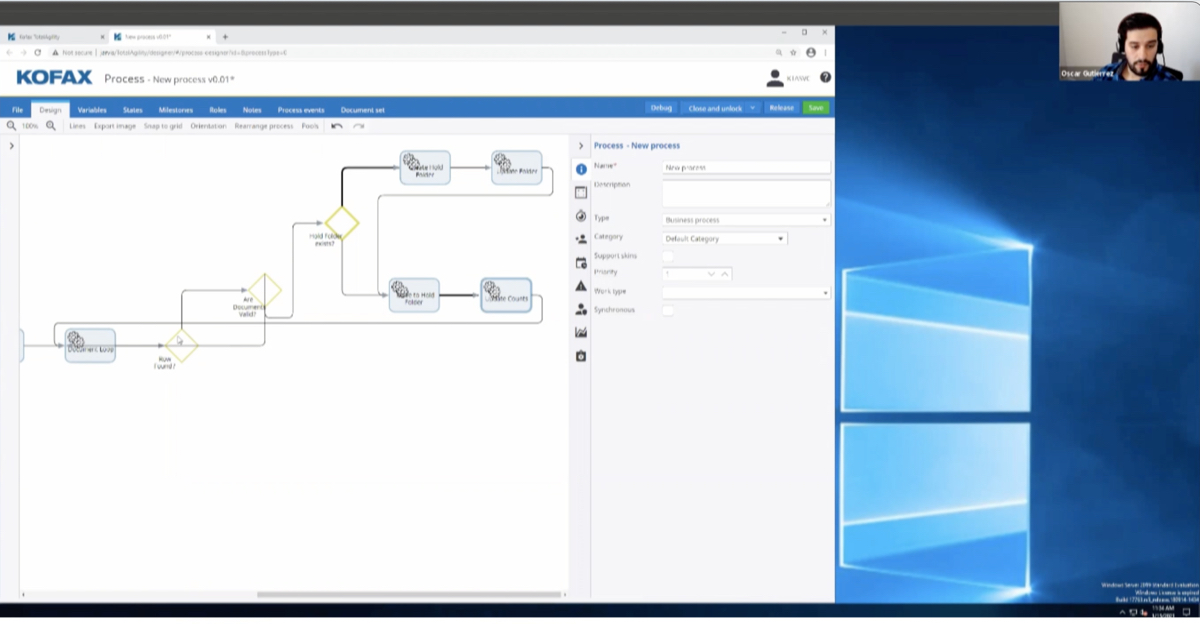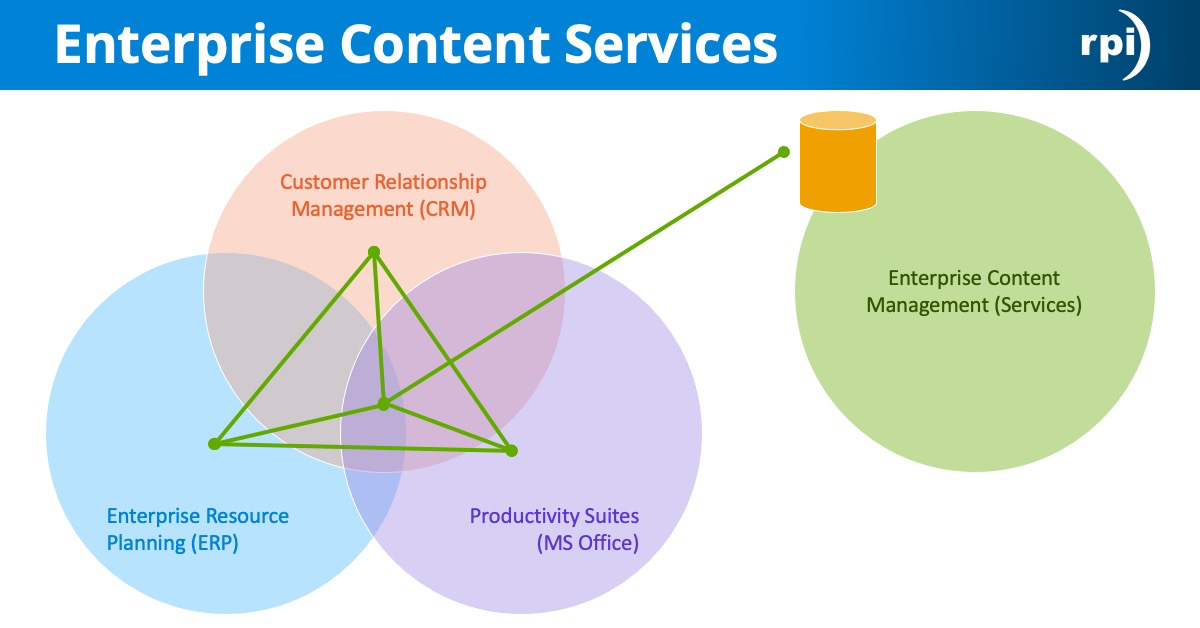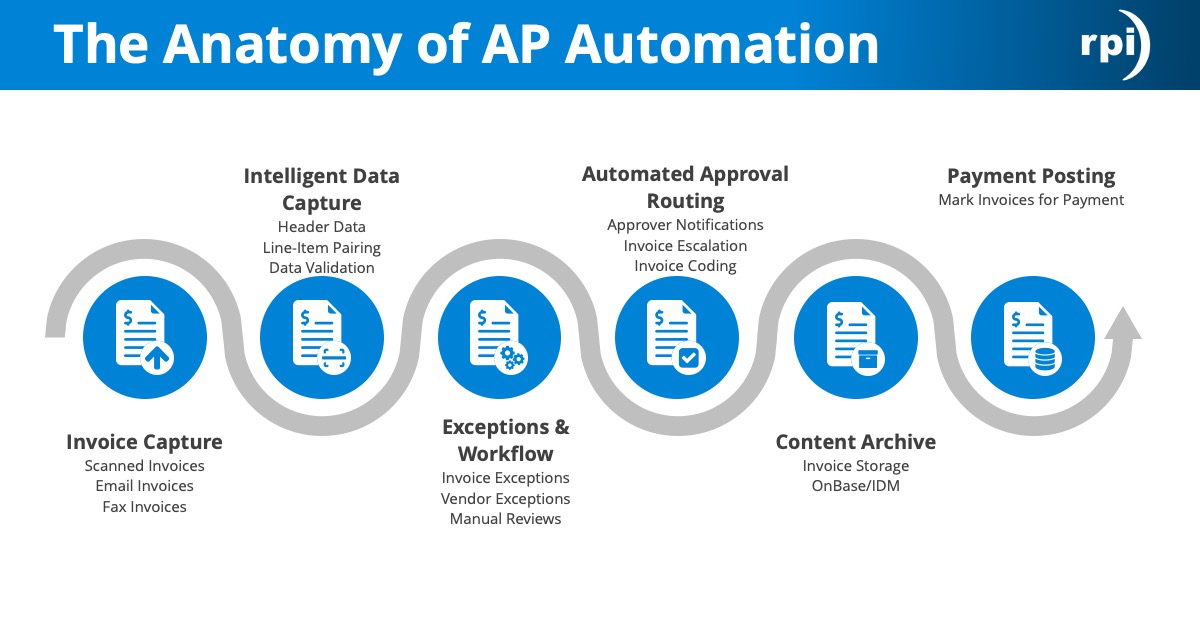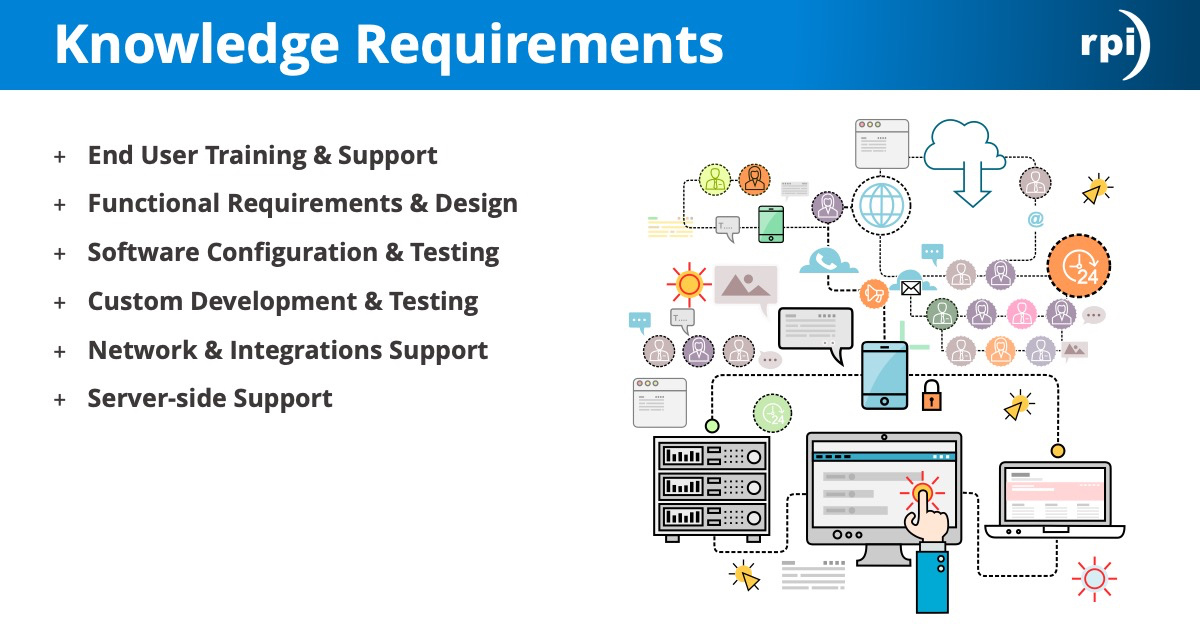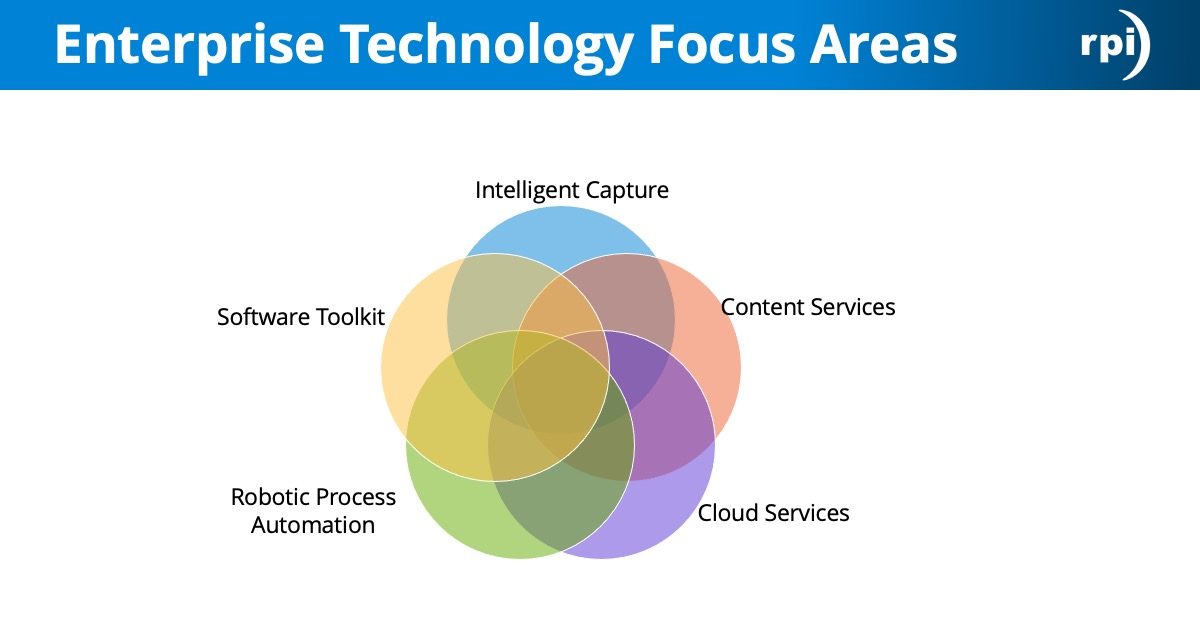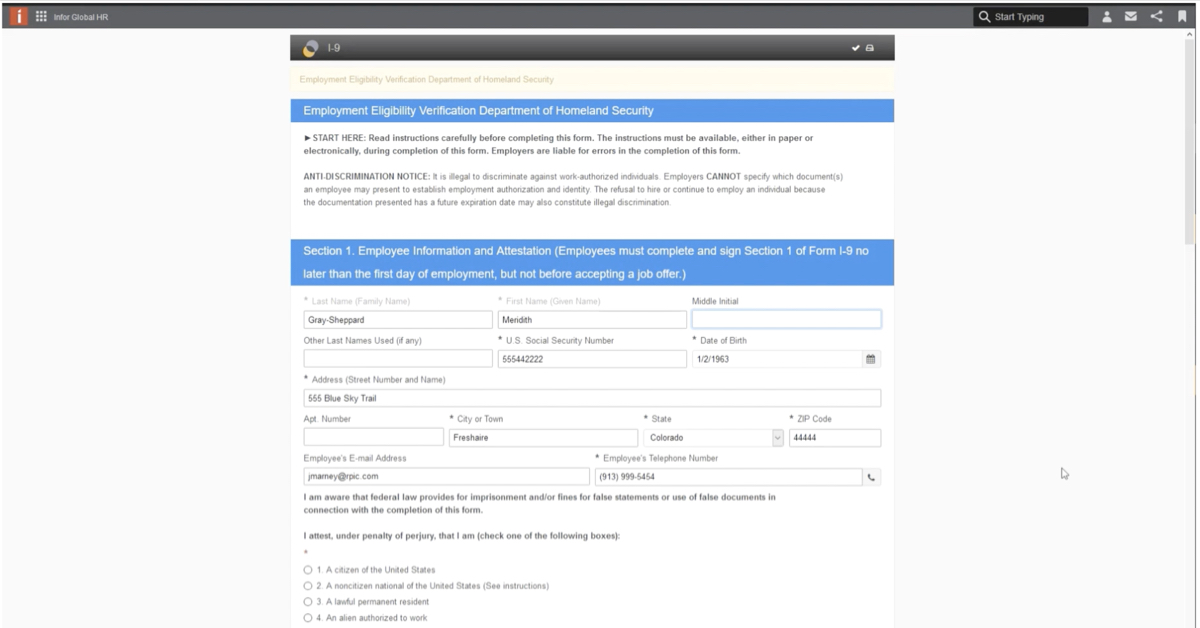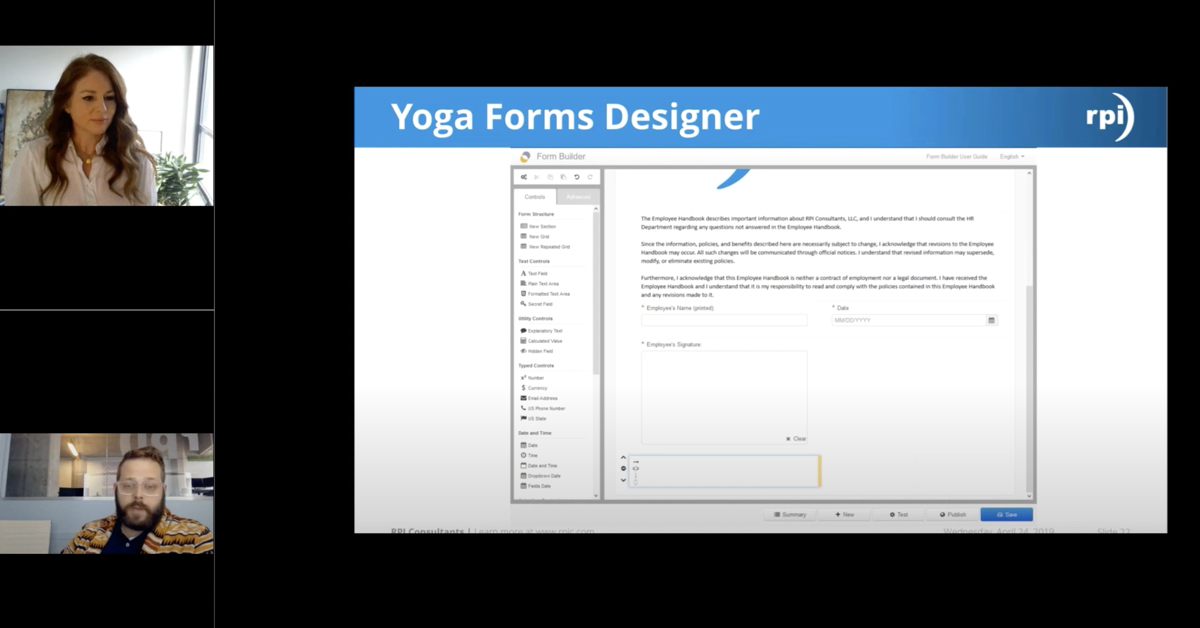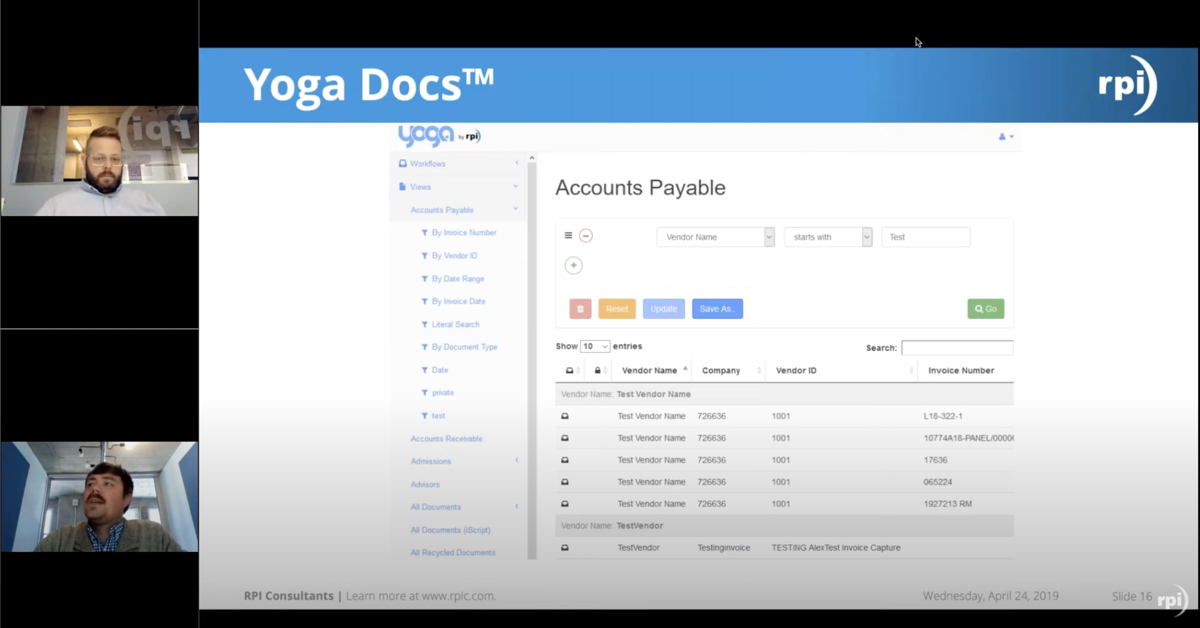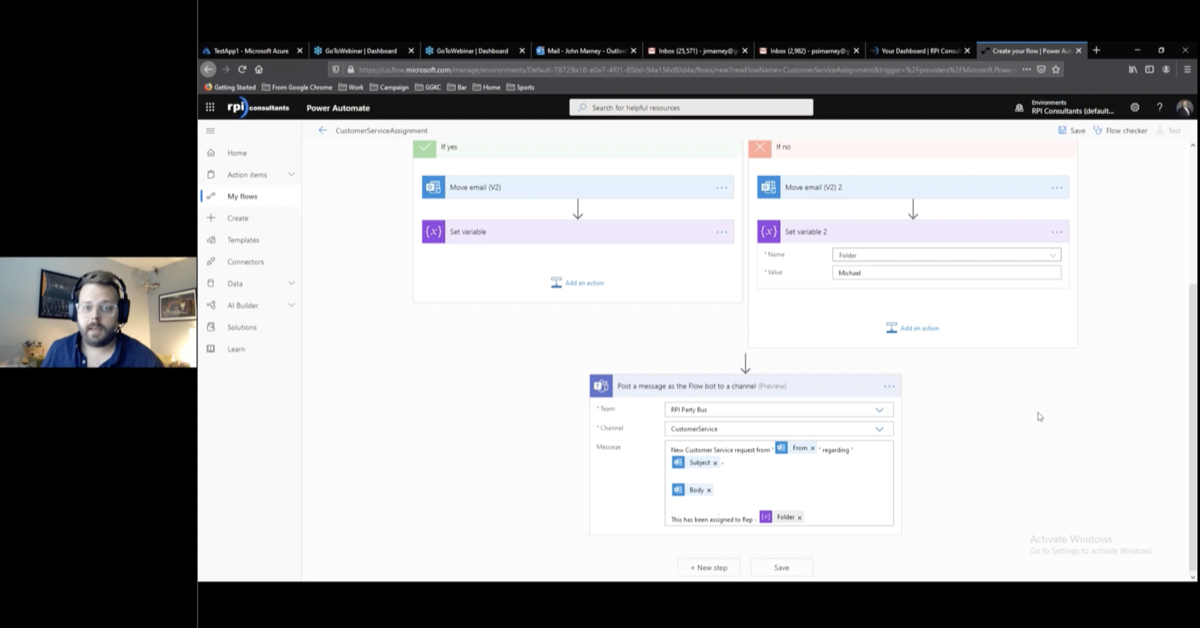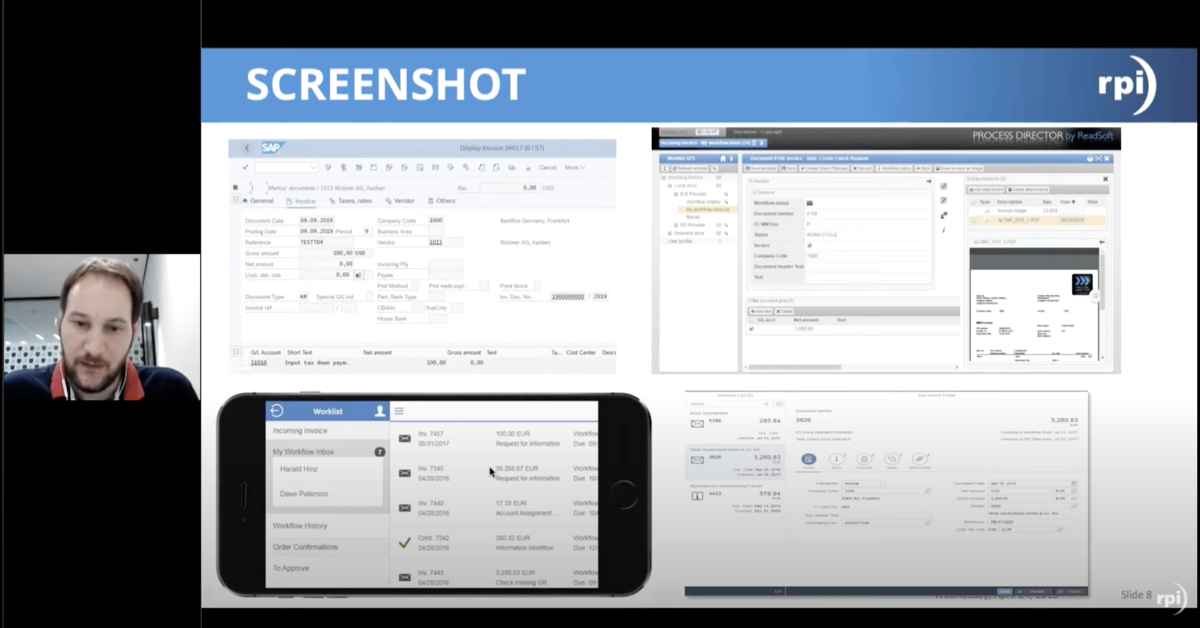Daniel:
Hello everyone, and welcome to another one of the RPI’s nationally acclaimed Webinar Wednesdays. I’m Daniel. This is Adam. Today’s topic is Perceptive Experience Content Apps. The next generation web plan for Perceptive Content, able to deliver content services through a single adaptable user interface. Content Apps are modular in design and can be pieced together to combine platform capabilities into tailored user interfaces.
So, before we get started with Perceptive Experience, here are some other RPI events you should be interested in. On the webinar front, later today we’ll be discussing migrating your enterprise content and data into the cloud.
Next month we will be talking about what’s new in Kofax TotalAgility 7.6 as well as what’s new in Kofax ReadSoft Online. On the ops side of things, this month we will be discussing Perceptive Content application plans led by our lead consultant, Mike Madsen and next month we will actually be discussing Perceptive Experience presented by our resident expert Adam.
Adam:
Hi, I’m Adam Kinney. I’m a senior technical architect here at RPI Consultants. I come with a bachelor’s degree in management information systems from the University of Iowa and I’ve been working with Perceptive Content for about eight years now. I am the self-proclaimed King of the North, given my remote location in St. Paul.
I’m pretty sure everyone calls me that.
Daniel:
Sure, you can think that.
Hello everyone. My name is Daniel Jenab and I am a project coordinator here at RPI Consultants. A little bit about myself, I received my master’s degree in communications management from George Washington University. I am certified as a Kofax technical solution specialist and Kofax TotalAgility and I’m the de facto office personal trainer and nutritionist. Remember a personal health check is just as important as a technical health check.
Additionally, we should discuss the elephant in the room. As you see with Adam and myself, this is the most heavily bearded webinar in RPI history. So, viewers, you picked a perfect day to tune in.
On the agenda for today’s webinar. First, we’ll give a general overview of Perceptive Experience Content Apps, what they are, and some items of consideration. Next, we’ll move on to our Perceptive Experience case studies, which are firsthand looks at how Adam and other RPI Consultants have implemented Perceptive Experience in unique ways to fit the needs of our clients. From there we’ll get into some Perceptive Experience pre-requirements and whether it makes sense for your business. And finally, we will finish with a summary and questions wrap up section.
Adam:
So, first thing we want to answer is what exactly are we talking about when we say Perceptive Experience Content Apps? Basically, it’s a one stop shop for your document management needs in an HTML5 front end. When we say Perceptive Experience, we need to differentiate that from when we say Content Apps. Perceptive Experience is the platform that Content Apps are built upon. So again, it’s a web based HTML5 front end for your end users. Content Apps encompass things such as capture, workflow, tasks, views, et cetera. There are other Experience apps that lie outside of the Content Apps realm. These include financial processing apps such as invoice approval, healthcare apps, and web scanning.
So, let’s go through a couple of differences. Well, six differences between WebNow and Content Apps. WebNow is a Java-based web client, whereas Perceptive Content Apps are HTML5 based. API calls are made by WebNow directly to the ImageNow server, where Content Apps leverages integration server and restful web services calls to performance actions.
WebNow supports client validation authentication, meaning no external identity provider is needed for single sign on type scenarios, whereas Content Apps does not have that level of interaction with a user’s desktop. So, an identity provider such as Shibboleth is necessary. WebNow does not require HTTPS or SSL where Content Apps does. WebNow can also capture documents via drag and drop or simple file upload. Whereas Content Apps requires web scanning for document submission.
There are a few considerations to be made when you’re deciding when and if to get off of WebNow and onto Experience Content Apps. The first major one being the 7.3 Sunset date of WebNow. this version of content, 7.3 is the last version that WebNow is going to be developed and supported upon. Also, in order to get the latest and greatest features of Content Apps you need to be on Experience or excuse me, on the server 7.3.
Earlier versions of Content Apps 2.4 do work on earlier versions of the server, but with the newest features, 3.0 is only compatible on 7.3 and greater. The server-side Java requirement, we all know that Oracle has changed their licensing scheme for some of their JRE deployments. So, one thing we do suggest is going with Open JDK on the back end. Again, not on the end user workstations, but on the backend where Apache’s hosting the Content Apps.
Analyzing how your users are currently using WebNow is also important. Are they exporting documents? What are their capturing and indexing needs? As well as they’re searching and retrieval. The server hardware necessary to run Content Apps is also quite a bit heavier than it is for WebNow and we will get into that a little later in this webinar.
So, let’s go over a couple of use cases that we helped other clients with when it comes to deploying a successful Experience content Apps deployment. One such client needed mobile access to content while they were out on the field. Employees of this human services organization were required to bring up documents on many devices, tablets, phones, laptops, while in the field with their clientele. Since we did not have any VPN software and it did have to be accessed from outside their network on the web, we had some security hardening concerns when it came to Apache. SSL, taking out some default Apache configurations, disabling any remote management, as well as making sure the firewall is strictly set up. We also customize the Perceptive Experience Content Apps viewer to give them a very slick and slim Experience when searching and retrieving documents.
Another such client wanted to embed a Content Apps viewer pane within their homegrown ERP system so that when browsing their ERP system they could bring up the document of said information right within that third-party application. They also had a requirement of a fully functional Content Apps instance where end users could perform all the actions necessary. So, we were able to strip down all of the extras around that content viewer, the searching, the routing buttons, the views, the indexes, all of that, and created a very lean viewer for them to embed in their ERP system.
Daniel:
White labeling, which is the practice of removing a default or vendor brand and replacing it with the branding requested by the purchaser is one of Perceptive Experiences biggest and often underrated strengths. Experience offers a very intuitive method of white labeling and enabling even the least technical user to create customized Perceptive Experience branding.
So, as you could see on the screen, this is a screenshot of the default configuration file for Perceptive Experience 2.4 and you can see how easy it is to look at the configuration variables and edit the display name, the logo, and even the background colors, making an Experience solution that is truly, uniquely yours. Some additional use cases of Experience that we’ve come across can be seen here. As Adam has talked about, Experience can be configured to use SSL, with Shibboleth being the most commonly used identity provider, and if you look at Hyland documentation, most often they will refer to Shibboleth and that documentation for Experience SSO.
Additionally, tasks can also be completed within Content Apps, tasks and their associated tasks reasons such as approved, deny, return are all viewable and able to be completed within Content Apps. Additionally, Experience also offers Experienced search, which a lot of clients are using as a replacement for full text search. Experience can complete workflow actions such as embedded queue viewing and routing documents forward and back. Experience can also capture content from mobile device or web browsers. And finally, Experience can also perform URL hot linking to documents. Users can send Experience URLs to users from their own desktop client. So now we come to quite possibly the cheesiest sentence I’ve ever said: are you ready for the Perceptive Experience? Thanks.
Adam:
So, let’s go over some software requirements of a successful deployment of Content Apps. For starters, there’s the Perceptive Content server and if you want Content Apps 3.0 you will need 7.3 of the server itself. Same goes for integration server. File conversion service 4.3 leverages another piece of middleware known as NodeJS in order to convert the documents to PNG for universal viewing in browsers.
Perceptive Experience web scan and a cloud certified ISIS driver are required if you plan on capturing documents via Content Apps. Also, Apache Tomcat 9.x is the preferred web application server and either Oracle JRE or the recommended Open JDK 11 can be deployed on the back end.
Earlier we mentioned that the requirements for the server are a little bit higher than they are for WebNow, so while it’s going to vary depending on how many users you have and what exactly what they’re doing in Experience Content Apps, a typical installation of let’s say less than 50 concurrent users, will leverage the specifications you see here. One important note is that RAM will be taken up by Apache Tomcat, at least 50% of it just because of the conversion needs required by file conversion service.
Daniel:
As a last step of the requirements, it’s always important to review what sorts of licenses you’ll need to operate Perceptive Experience. You will have to have Perceptive content combo licenses. This is something that many clients who may have historically only used WebNow may not have, so you’re able to swap non-combo licenses through your Hyland rep. Please contact them if you have any questions regarding that.
Additionally, we will need the Perceptive integration suite, so the licenses for the Perceptive integration server, the Perceptive integration server transaction pack for apps as well as Perceptive integration framework.
So finally, let’s say you reviewed the software, hardware and licensing requirements and have decided to move ahead with the Perceptive Experience implementation. Here’s what you have to look forward to.
For starters, there’s enhanced security as Cell is required and Java updates are not necessary on client workstations. There is browser compatibility with all modern browsers, Internet Explorer 11, Microsoft Edge, Firefox, Google Chrome and Safari are all supported with Perceptive Experience.
There is device compatibility as well with all modern phones and tablets being able to run Experience. The customizable interface for a better user experience, like how I talked about with the white labeling, is something that’s a huge benefit. Scalability, like how am talked about with the hardware requirements. While he discussed the minimum requirements, you’re able to increase that hardware and make performance better. And finally, the product roadmap. So, a WebNow will no longer be supported after Perceptive Content 7.3. Experience will be, and Hyland has made it clear that Experience is the software of the future.
So, Adam and I have been talking for quite a while. Now we’re looking to get some audience interaction. At this point in time, please post any questions about Perceptive Experience, individual Content Apps, Minnesota or even beards into the GoToMeeting chat box and our moderator, Michael Hopkins will read them to us.
Michael:
I think the first question we all want to know is, is it Java or Java?
Daniel:
It’s Java?
Michael:
Fantastic. All right. First a moderator question. Could you explain a little bit more about web capture?
Adam:
Sure. What capture is, is another piece of middleware that sits between your client workstation and the Experience Content Apps web application. What it does is it allows for the cloud ISIS driver on the client workstation to communicate with Content Apps as well as integration server and make those restful web API calls to ingest documents that you scan via the web platform.
Michael:
Great. Next question. Is there a published sunset date for WebNow?
Adam:
Whatever the published sunset date is for seven dot three I’d have to double check on Hyland, but I’m not sure exactly when 7.3’s sunset date is.
Michael:
Is folder viewing part of the default app or does it have to be built in?
Adam:
You can view folders as part of an out of the box Perceptive Experience Content Apps installation.
Michael:
Correct me if I’m wrong, I believe that’s 7.3 and up.
Adam:
7.3 and up, yes. Experience Content Apps 3.0.
Michael:
It looks like that’s it.
Daniel:
All right, great. So, thank everyone for those questions. Let’s wrap up this webinar. I’d like to briefly cover what’s coming ahead in the next month for RPI, some additional resources and finally just a small bit about what we do.
So just to recap here on the webinar front, later today we’ll be discussing migrating our enterprise content and data into the cloud. Next month we’ll be talking about Kofax TotalAgility 7.6 as well as Kofax ReadSoft Online. For office hours, this month we’ll be discussing Perceptive Content application plans and next month Adam will be talking about Perceptive Experience and a lot of what we cover today and we’ll be doing a hands on demonstration.
Adam:
Can’t get enough.
Daniel:
Everybody’s wanting to know about Perceptive Experience. So if there are any questions about the content we discussed, please go to rpic.com to view this webinar as well as previously recorded webinars.
You’ll find our webinars, our knowledge base and some specific Content and Process Automation services as well.
And just a brief bit about what we do. RPI has over a hundred full time consultants and project managers. We are based in Baltimore, however, we have additional offices in Tampa and Kansas City, where Adam and I are actually presenting from today. We offer a number of technical and professional services and we are a Hyland authorized solution provider. And finally, we’d like to end on an artist’s best rendition of Adam and myself. Thank you for joining the webinars.










